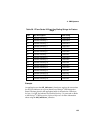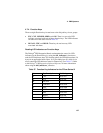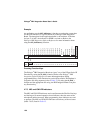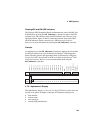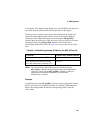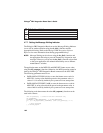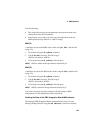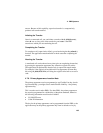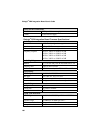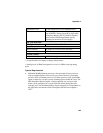
Dialogic
®
PBX Integration Board User’s Guide
20 32 30 30 5F 32 30 33 xx xx xx xx xx xx xx xx
0123456789101112131415
Data
Byte
bb200_203
Text
xx xx xx xx xx xx xx xx
16 17 18 19 20 21 22 23
xx xx xx xx xx xx xx xx xx xx xx xx xx xx xx xx
24 25 26 27 28 29 30 31 32 33 34 35 36 37 38 39
Data
Byte
Text
xx xx xx xx xx xx xx xx
40 41 42 43 44 45 46 47
4.7.7. Setting the Message Waiting Indicator
The Dialogic
®
PBX Integration Board can set the Message Waiting Indicator
(on or off) on another extension using the dx_dial( ) function and the
appropriate dial string. Refer to the Dialogic
®
PBX Integration Software
Reference
for more information about dialing programmable keys.
NOTE: Message Waiting can also be set using the dx_dial( ) function and
the appropriate dial string to press the Feature Key assigned to send
messages. However, you can use the dx_dial( ) function as described
so that your application will maintain functionality across different
manufacturers’ switches.
The application must set the MWI ON and MWI OFF feature access codes
using the d42_setparm( ) function. Otherwise, the MWI operation cannot be
done by the Dialogic
®
PBX Integration Board connected to the NEC PBX.
The following parameters must be set:
• D4BD_MSGACCESSON (0x0A) to store the feature access code for
MWI ON. A string value should be passed as the parameter value. A
value of **9 is stored by default by the system service at startup time.
• D4BD_MSGACCESSOFF (0x0B) to store the feature access code for
MWI OFF. A string value should be passed as the parameter value. A
value of ##9 is stored by default by the system service at startup time.
The following code demonstrates how the d42_setparm( ) function can be
used in this context:
char str parmval[8]; // cannot be more than 8 characters long
int paramNumber;
paramNumber = D4BD_MSGACCESSOFF; // or D4BD_MSGACCESSON
if ( (rc = d42_setparm(devh, paramNumber, (void *)&str_parmval[0])) == -1)
{
// error processing
} // end d42_setparm
162




